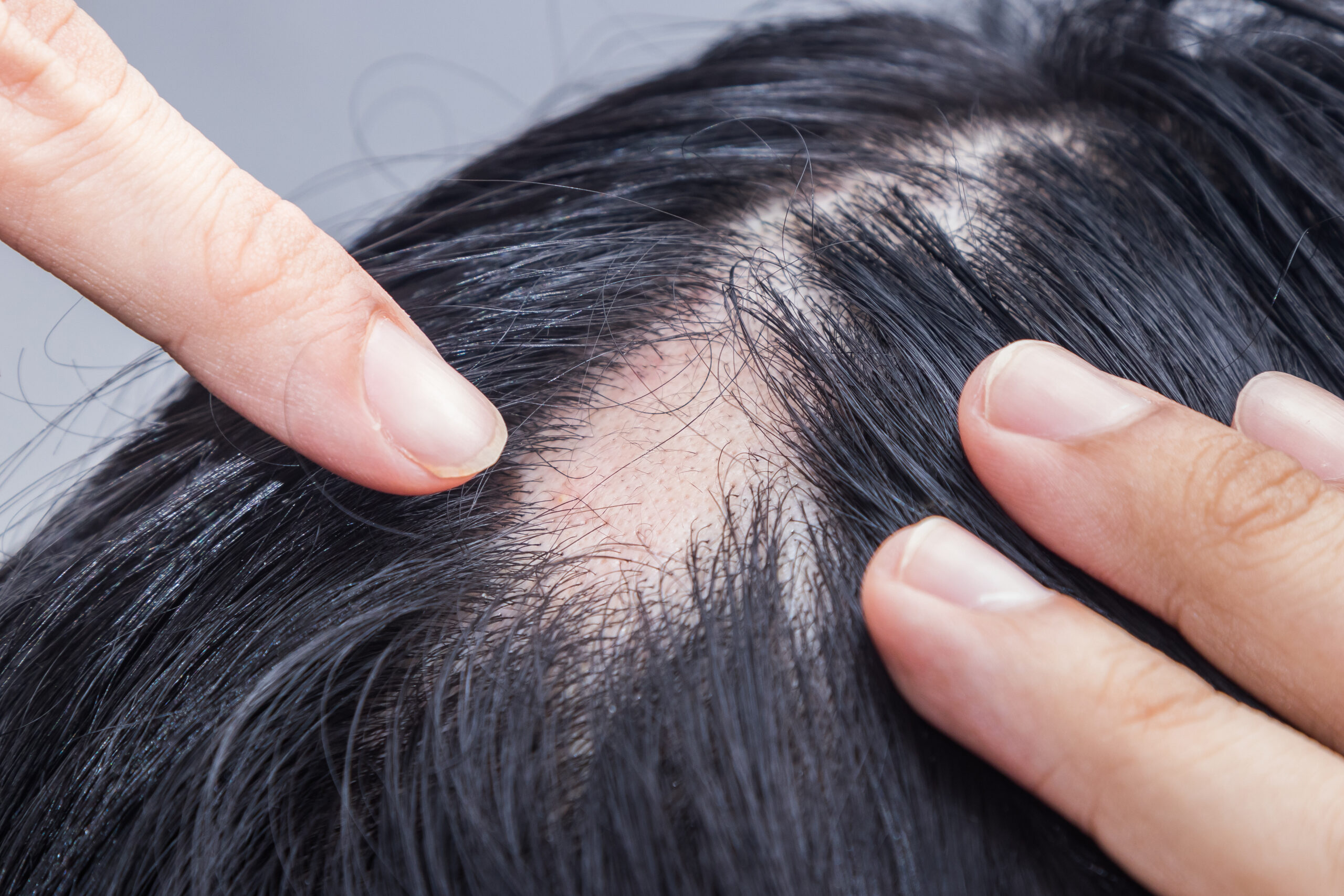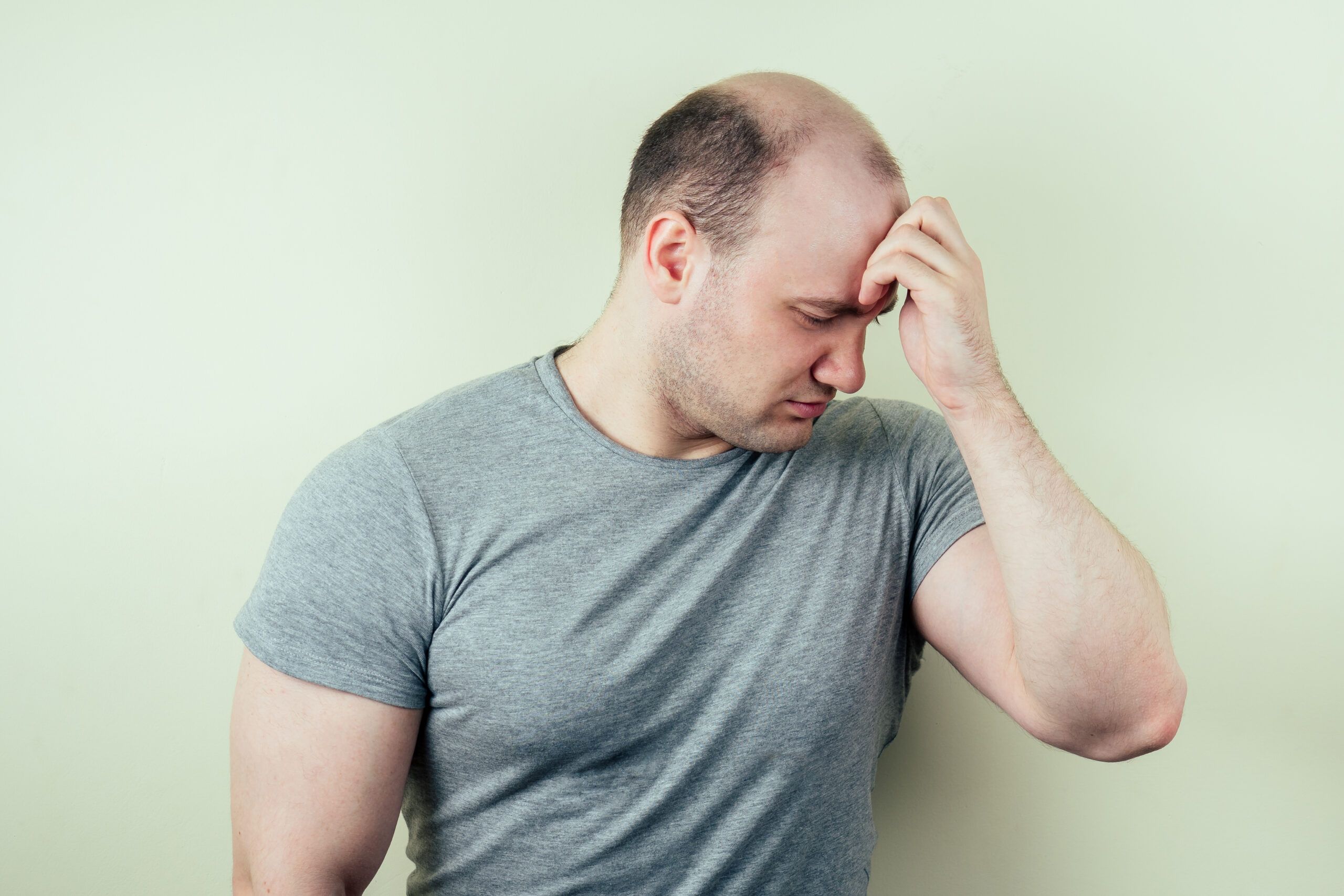Male pattern baldness (MPB) is responsible for 95% of male hair loss. The MPB is extremely common: about half of all men experience this condition by age 50.
In most cases, it advances over several years – meaning all your hair won’t fall out in one day – but in extreme cases, it can lead to total baldness at the top of the head. It can take decades or only a few years. Scientists disagree about how long it will take.
Let’s get into the who, what, where, when, why, and how of male baldness.
Who Does It Affect?
Despite its name, male pattern baldness affects men & women alike; sometimes referred to as female pattern baldness, hereditary sensitivity exposes it to the effects of male hormones on the scalp & hair follicles. Unlike men, women rarely experience receding hairlines, and hair loss follows a differing pattern.
What Exactly Is Male Pattern Baldness?
In male-pattern baldness (MPB), different spots on the scalp shed hair, resulting in a horseshoe-shaped bald spot. Baldness involves more than just losing hair. MPB patients have smaller hair follicles on their scalps. Hair follicles comprise many cells, and each plays a key role in creating hair, in fact, a chain of proteins, most of which are keratin.
It is from these follicles that hair gets its unique characteristics, such as curliness and color. Strands in MPB patients are smaller and produce less hair, which contributes to hair loss. Over time, these follicles die, resulting in a bald patch.
“Male pattern baldness” gets its name because most men lose their hair in the same way:
- Thinning hair or hair loss around your temples
- Hairline recedes—you lose the hairline between your scalp and your face when this occurs.
- Hair thinning on your crown
- Hair loss on the back of your head in the occipital region near the neck
Hair loss that does not follow this pattern may be a unique problem. Please seek help.
Where Does It Most Commonly Happen To Someone?
Hair loss can happen on your whole body or just your scalp, and it’s temporary or permanent. The condition may result from heredity, hormonal changes, medical conditions, or aging alone. Hair loss on the head is more common in men than in women.
We commonly call hair loss from head balding. You can conceal it with hairstyles, makeup, hats, and scarves. Another option is to treat hair loss with medicine.
When Does Male Pattern Baldness Start?
The US National Library of Medicine (US NLM) reports male pattern baldness affects more than half of all men over 50. But you can lose hair at any age and any stage of your life. It is not uncommon for teenagers to notice hair loss around the hairline at 17. This may lead to further hair loss/male pattern baldness in the future.
Male pattern baldness appears between the ages of 25 and 35 and becomes worse with age. Our hair loss specialist can advise you on hair restoration treatments and when you should seek help with hair loss. Each individual’s hair loss rate will differ, and exploring hair restoration can be helpful.
This process occurs at different rates in people. Mature hairlines can happen to anyone; genetics does not play a role. Approximately 95 percent of Caucasian males will have a mature hairline. A receding hairline and thinning crown are signs of male pattern baldness; receding hairlines have distinct V-shapes that are more obvious than maturing ones.
Male pattern baldness usually has a receding hairline that is significantly shorter than a maturing hairline. In a maturing hairline, the entire hairline recedes at about the same rate. The hairline is usually 1-1.5cm above the juvenile hairline. Male pattern baldness hairlines are more profound than 1.5cm, and the temple areas are more significantly recessed.
Why Does It Happen?
Male Hormones: Aristotle identified maleness as a contributing factor to baldness. He claimed that no boy, woman, or castrated male ever goes bald and that baldness was a sign of masculinity (even though he was bald!). Science has largely confirmed his assertions. Hair follicles react to male hormones, which cause baldness.
Testosterone is the most common hormone in men. The scalp skin synthesizes a substance called dihydrotestosterone (DHT) in response to testosterone. When DHT is present, hair follicles in balding areas shrink. In contrast, DHT does not affect the follicles on the sides and back of the head. It is puzzling how DHT promotes the growth of beards and chest hair. For this reason, bald men can have bushy beards and hairy chests. It is unknown how DHT affects hair growth differently in different parts of the body.
Genetics: Genes may influence the sensitivity of the follicles to DHT. If your relatives have thin hair or bald heads, you may follow in their footsteps. You can get this trait from your mother or your father. However, your mother herself will usually be unaffected unless she loses her hair after menopause.

The aging process: Baldness becomes more prevalent as people age: by the age of 35, 40% of men have noticeable hair loss, and by age 60, it’s 65%. While older adults do not have completely bald heads, their hair is thin.
How Can You Treat Male Pattern Baldness?
Loss of hair is a complex reality for many men. Sadly, plenty of clinics promise incredible results and do not always warn you what can go wrong. There is no guarantee that hair replacement treatments will be effective or affordable. You can get an opinion from one of our doctors at Skin Cancer & Cosmetic Surgery Center of NJ before making a final decision.
Embracing The Journey Of Life
Baldness is a normal part of aging for most men. In most cases, affected men prefer not to receive treatment. Washing and combing your hair usually will not cause its fall out to speed up, so stick to your routine.
Find out which style best suits you: many people favor short or cropped styles. Getting your hair cut by a good hairdresser or barber can make you feel and look great. Sometimes, baldness can distress, mainly if it occurs early in life or excessive. In that case, medical treatment may help.
Medical Treatment
Two of the most effective medications are Finasteride and Minoxidil. The US FDA approved Finasteride in 1997. This drug works by preventing testosterone from converting to dihydrotestosterone. Consequently, the latter hormones do not cause hair follicles harm, and they can regenerate.
Finasteride causes enough hair re-growth for about one in three to six men to consider the treatment worthwhile. Here are a few things about Finasteride:
- The effects take about four months to show, and it takes up to two years for full hair growth to occur.
- In the absence of treatment, baldness will return. To maintain success, continue treatment.
- In rare cases, side effects may occur. Around 2 in 100 treated men report a decrease in sexual drive (libido)
- The prescription doesn’t work for women who have male pattern baldness.
- To get it from a pharmacy, you need a private prescription.
- It won’t work unless you keep taking it. You stop, and baldness continues.
The other medication is minoxidil lotion, which is a rub-on treatment available in pharmacies without a prescription. The mechanism behind it is unclear. Compared to the 2% solution, the high-strength (5%) solution is more effective for men. Foam versions of the 5% strength are now available.
Its effectiveness is subject to debate. This method works best early on, rather than when a lot of hair has already fallen out. It appears to be most effective in preventing further hair loss; however, some users report re-growth of hair.
Putting on Wigs
The traditional solution to baldness is to wear a wig. For some, they can be helpful, while for others, they can irritating and less convincing. Sometimes cost, and preference of wigs may be prohibitive for some men with male pattern baldness.
Surgical Scalp Removal
Scalp reduction surgery is a hair loss treatment, particularly for patients with top-hair baldness of both sexes. The procedure involves moving hair-bearing skin on your scalp to cover bald spots. In case of baldness on your head, the sides of your head may be pulled up and stitched together. Various surgical procedures, such as hair transplants and scalp flaps, exist for many years. New techniques produce better results. The success rate may vary.

